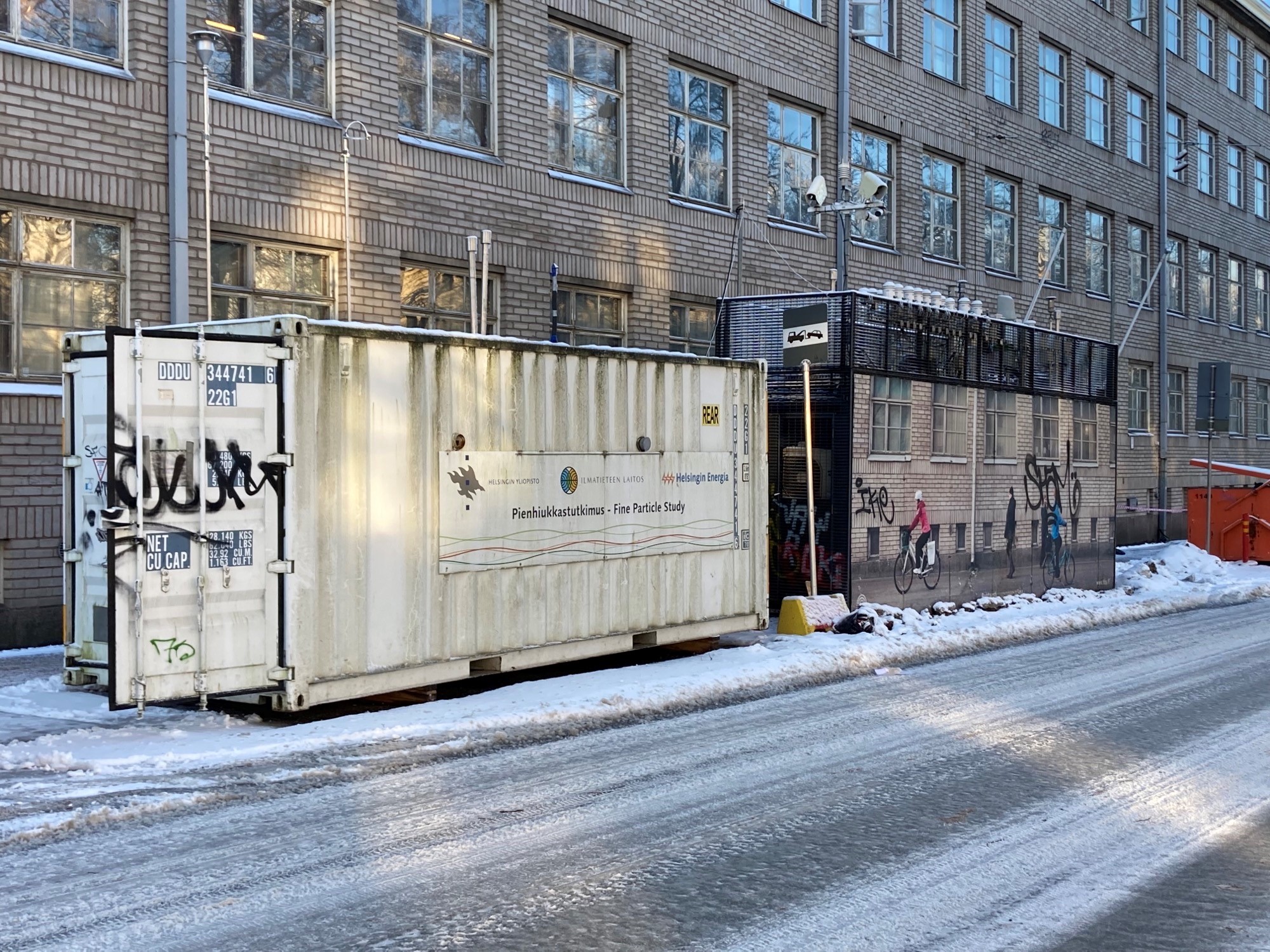The aim of the intensive measurement campaign is to increase the scientific knowledge of the influence of wintertime conditions to traffic emissions and their aging in the atmosphere.
The campaign focusing on in-depth characterization of traffic emission during wintertime has started. The aims of campaign are ambitious, including e.g., improved characterization of black and brown carbon, characterization of role of wintertime conditions (darkness, low UV, cold temperature) to aerosol formation, chemistry and aging, determination of traffic wintertime emission factors as well as characterization of secondary aerosol precursors and Intermediate-Volatility Organic Compounds (IVOCs) in the urban traffic environment. This is the first intensive campaign with this comprehensive measurement setup conducted at the supersite in winter conditions. Campaign participants are Finnish Meteorological Institute (FMI), Tampere University (TAU), Helsinki Region Environmental Services (HSY), University of Helsinki (UHEL) as well as several companies, Vaisala, Dekati, Airmodus and Pegasor, with their instrumentation.
Measurements are conducted at the HSY supersite in Helsinki situated at next to a busy street for a month during January and February 2022. Due to extensive instrumentation utilized in campaign, an additional monitoring station was installed next to the Supersite station to provide additional space for the instrumentation. In addition, TAU’s ATMo-Lab equipped with extensive aerosol characterization instrumentation will circulate in nearby areas in Helsinki giving further information of spatial and temporal variation of the emissions. Additional measurements conducted at the SMEARIII -station, situated 1 km away, will provide important information about urban background concentrations.

Instrumentation includes state-of-the-art instrumentation to characterize black and brown carbon concentrations, the chemical composition of gaseous compounds and aerosol particles as well as concentrations and size distributions of particle number (PN) and lung-deposited surface area (LDSA). The aging of aerosols will be simulated with a potential aerosol mass (PAM) -chamber.
This campaign is organized by BC Footprint -project (www.bcfootprint.com) and is part of RI-URBANs, Urban air quality 2.0 and ACCC flagship efforts.
Contact
For more information about the campaign, contact Senior researcher Hilkka Timonen, Hilkka.timonen@fmi.fi and Prof. Topi Rönkkö, topi.ronkko@tuni.fi